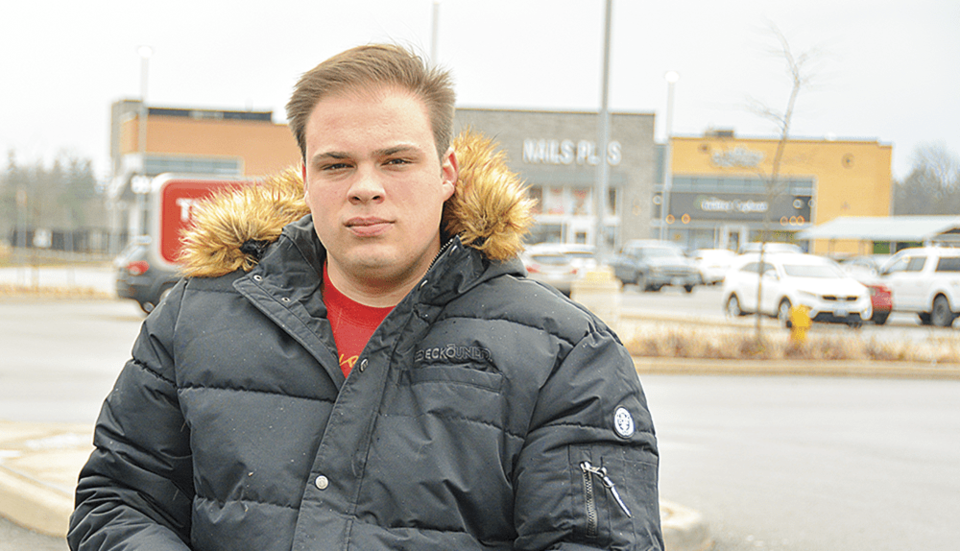Social distress includes addiction, mental health, homelessness
When Steven Soos ran as a candidate for the open Ward 1 Pelham Town Council seat in last autumn’s by-election, he was a hard-charger and tireless advocate for the homeless, the mentally ill, and the addicted. He insisted that a state of emergency needed to be declared in Niagara, so that government powers could be directed to these societal crises.
His passionate approach seems to be gaining traction.
On Monday evening Pelham became the eighth Niagara sub-municipality—joining Niagara Falls, Thorold, Grimsby, West Lincoln, Wainfleet, Fort Erie, and Niagara-on- the-Lake — to vote unanimously in favour of Soos’ resolution, supporting his request to Niagara Regional Council.
“I always highlight these issues on my show [the online broadcast “True Politics”] where I am interviewing local politicians, MPPs, senators, indigenous leaders. It’s a platform to put these problems front and centre,” says Soos.
He asserts that homeless shelters are operating at overcapacity, and cites a social services count in March 2018 that identified 625 homeless people in Niagara, with 144 of them children.
“Niagara Emergency Medical Services reported 335 suspected opiate overdoses between January and June 2019,” says Soos. “From January 2020 to September, it was 475.”
Soos’ expectation is that his resolution will be circulated widely, with a list including Ontario Premier Doug Ford, ministers of municipal affairs and housing, public health and social services, all the way up to Prime Minister Justin Trudeau.
Key local allies in Soos’ effort include Thorold Councillor Jim Handley, and Niagara Falls Councillor Wayne Campbell, whose own daughter was a victim of a mental health tragedy.
“The reasoning I’m going to the lower tiers is that I think it's important that we stand together on this issue,” says Soos. “If we have multiple municipalities requesting that the Region declare a state of emergency, then it's a powerful call. And when we're dealing with the province and the federal government, if you have all these municipalities on board, it adds weight to the resolution.”
If you have all these municipalities on board, it adds weight to the resolution
Soos stresses that the benefit of declaring a state of emergency is that it gives the municipality additional powers with regard to procurement bylaws. It also requires a proper response from the province.
“It's a good way to inspire the budget debate around the issues, and, of course, there are recent precedents for a state of emergency being called, namely on COVID-19 and climate change.”
Soos points to First Nations reserves, where states of emergency declarations had been invoked over the lack of clean drinking water.
“I touched base with Councillor Olson about this recently…. it was a good chance to congratulate him on his election win. We had a great conversation about mental health, homelessness and addiction. He referenced his own work in addressing homelessness and affordable housing.”
According to the Canadian Association of Mental Health (CAMH) website, each year 20 percent of Canadians will experience some sort of mental health issue, and 70 percent of mental health problems have their onset during childhood or adolescence. The root causes may be genetic, biological, or environmental, and the problem runs the spectrum of all ages, cultures, education attainment and income levels.
Depression, anxiety disorders and schizophrenia, substance abuse disorders, chronic pain, problem gambling — all have a mental health connection. Most people can recover with appropriate treatment.
The poor are several times more likely than those in higher income groups to report poor to fair mental health, while studies in various Canadian cities indicate a high rate of mental illness among homeless people. Stress is most acute during times of isolation, so the social restrictions of COVID-19 create a breeding ground for mental health afflictions.
Other unsettling statistics: Among Ontarians aged 25 to 34, one of every eight deaths is related to opioid use. About 4000 Canadians per year die by suicide—an average of some 11 suicides a day. In 2016, suicide accounted for nearly one-third of deaths among youth aged 15 to 19, and nearly a quarter among young adults aged 20-24. After accidents, it is the second leading cause of death for people aged 15-24. First Nations youth die by suicide about five to six times more often than non-Indigenous youth, and suicide rates for Inuit youth are among the highest in the world, at 11 times the national average.
CAMH asserts that mental health care in Ontario is underfunded by about $1.5 billion dollars.
The economic burden of mental illness in Canada is estimated at $51 billion per year. This includes healthcare costs, lost productivity, and reductions in health-related quality of life.
“It’s been so difficult for young people during the pandemic,” says Soos. “Niagara is heavily reliant on the tourist sector, and COVID has impacted hundreds of young people in these jobs. With rising unemployment, we see an increase in homelessness, addiction, and mental health issues. It's all interconnected.
“It touches everybody…our farmers in Pelham, military veterans with PTSD living here…I'm fighting for them as well.”
In an early December statement, Niagara West MPP Sam Oosterhoff announced that the Ontario government would provide Niagara with $4 million dollars in social services funding, with the expectation that the money would be targeted at long-term housing and overnight shelters.



